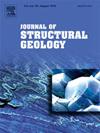Investigating the Messinian salt in the Lebanese Levant basin: Insights into the geology and tectonics of the eastern Mediterranean region
IF 2.6
2区 地球科学
Q2 GEOSCIENCES, MULTIDISCIPLINARY
引用次数: 0
Abstract
The Messinian salt layer in the eastern Mediterranean region plays a key role in the Pliocene-Quaternary deformation and formation of the tectonic structures in the Levant Basin. The objective of this paper is to leverage 3D seismic reflection data from the northern Levant Basin offshore Lebanon in order to map the Messinian salt layer and understand its effect on the structures around it. For that, we used current 3D time seismic reflection data to investigate the seafloor and interpret the top and base of the salt layer, and we generated their corresponding bathymetric and structural maps. In addition, we generated isochron maps of the salt layer and the post-salt sedimentary section in an attempt to detect the variations in the lateral thicknesses of these layers. The presented maps helped to understand the impact of the Messinian salt deformation on the surrounding geological structures. We assess the distribution and geometries of the salt structures, and discuss the change in salt thickness across the basin. We also relate the halokinetic movement of the Messinian salt to the formation of bathymetric features along the seafloor. The results provide additional knowledge about the salt tectonics of the Messinian salt layer in the Levant Basin, and offer investigators to pursue further studies on the hydrocarbon potential in relation to the Messinian salt deformation.
调查黎巴嫩黎凡特盆地的墨西尼亚盐:对地中海东部地区地质和构造的见解
东地中海地区墨西inian盐层在黎凡特盆地上新世-第四纪构造变形和构造形成中起着关键作用。本文的目的是利用黎巴嫩近海黎凡特盆地北部的三维地震反射数据,绘制墨西尼亚盐层地图,并了解其对周围结构的影响。为此,我们使用当前的三维时间地震反射数据来调查海底并解释盐层的顶部和底部,并生成相应的水深和结构图。此外,我们绘制了盐层和盐后沉积剖面的等时线图,试图检测这些层的横向厚度变化。所呈现的地图有助于了解墨西尼亚盐变形对周围地质结构的影响。研究了盐类构造的分布和几何形状,探讨了盐类厚度在盆地内的变化规律。我们还将墨西尼亚盐的盐动力学运动与海底等深特征的形成联系起来。研究结果为进一步了解黎凡特盆地墨西尼亚盐层的盐构造提供了依据,并为进一步研究墨西尼亚盐层变形的油气潜力提供了依据。
本文章由计算机程序翻译,如有差异,请以英文原文为准。
求助全文
约1分钟内获得全文
求助全文
来源期刊

Journal of Structural Geology
地学-地球科学综合
CiteScore
6.00
自引率
19.40%
发文量
192
审稿时长
15.7 weeks
期刊介绍:
The Journal of Structural Geology publishes process-oriented investigations about structural geology using appropriate combinations of analog and digital field data, seismic reflection data, satellite-derived data, geometric analysis, kinematic analysis, laboratory experiments, computer visualizations, and analogue or numerical modelling on all scales. Contributions are encouraged to draw perspectives from rheology, rock mechanics, geophysics,metamorphism, sedimentology, petroleum geology, economic geology, geodynamics, planetary geology, tectonics and neotectonics to provide a more powerful understanding of deformation processes and systems. Given the visual nature of the discipline, supplementary materials that portray the data and analysis in 3-D or quasi 3-D manners, including the use of videos, and/or graphical abstracts can significantly strengthen the impact of contributions.
 求助内容:
求助内容: 应助结果提醒方式:
应助结果提醒方式:


